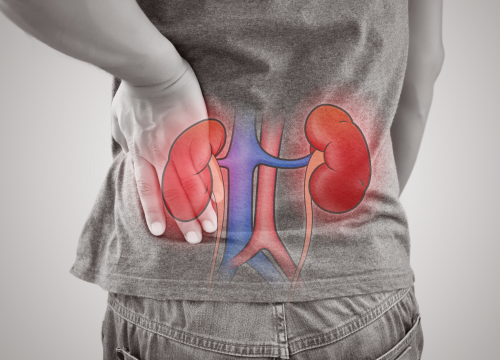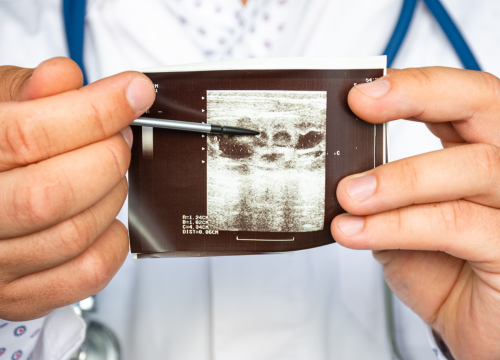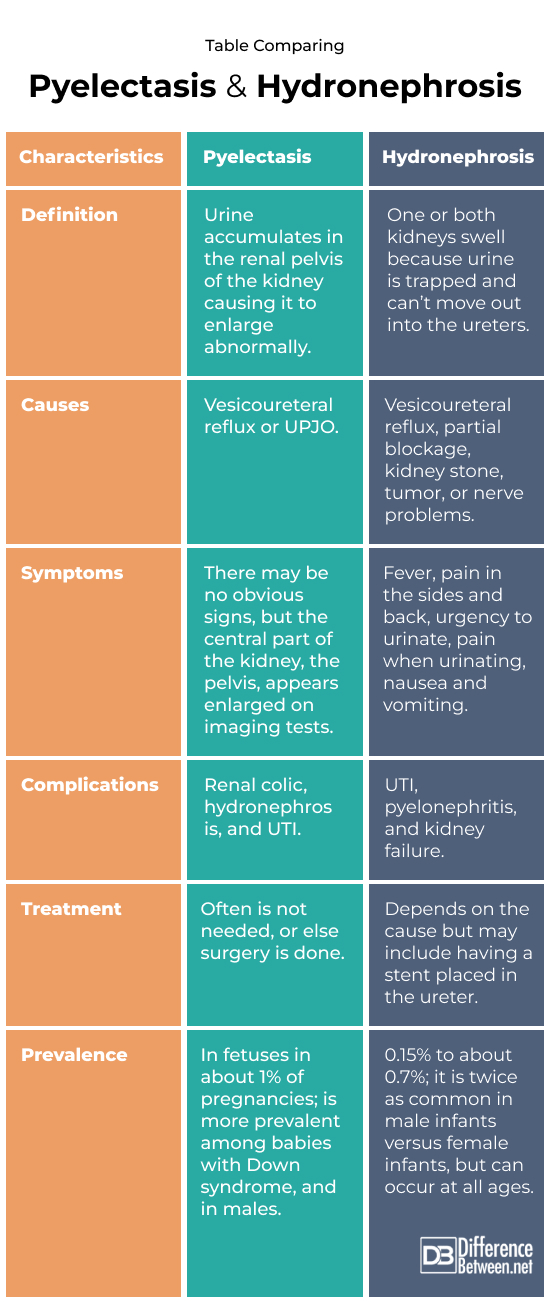Difference Between Pyelectasis and Hydronephrosis
Pyelectasis is where too much urine builds up in the renal pelvis. This causes the middle part of the kidney to swell up and increase in size. The problem occurs in some fetuses and may be due to some type of blockage between the ureters and kidney, or due to urine flowing backwards into the kidney. Hydronephrosis is when either both or a single kidney swells up and enlarges due to urine that cannot leave the kidney. This can be a result of a worsening of pyelectasis or some type of blockage, or due to vesicoureteral reflux. In a few cases, it can also happen if you have a kidney stone or a tumor in the kidney. These conditions need to be monitored and managed where needed to prevent dangerous complications like renal failure.
In short, pyelectasis is a problem where urine accumulates in the part of the kidney known as the renal pelvis. Hydronephrosis, on the other hand, is when the kidney enlarges and swells due to urine not being able to enter the ureters.

What is Pyelectasis?
Definition:
Pyelectasis is a condition where an unusually large amount of urine accumulates in the renal pelvis of the kidney. This condition is also known as pelviectasis, and can be a result of a blockage known as ureteropelvic junction obstruction. The obstruction may be due to a problem with the muscles of the ureter but can be due to some other structural problem of the ureters and surrounding anatomy. Pyelectasis can also result from a vesicoureteral reflux, which is when urine flows backwards into the kidney.
Treatment and complications:
In many cases, the problem resolves on its own. However, if the blockage is severe, surgery may be required to fix the problem. The surgery is known as a pyeloplasty and is done to correct a ureteropelvic junction obstruction, which is blocking urine flow. Complications of pyelectasis include hydronephrosis, renal colic, and acute kidney failure. This is why treatment is important if the condition persists.

What is Hydronephrosis?
Definition:
Hydronephrosis is when a single kidney or both kidneys swell and enlarge because urine cannot flow from the kidney. This condition can occur if pyelectasis worsens. It can also happen if there is a kidney stone present or a vesicoureteral reflux (urine flows back from the bladder to the kidney). Rarely, hydronephrosis happens if there is a tumor in the kidney causing an obstruction and stopping urine from flowing.
Treatment and complications:
Hydronephrosis is a more severe problem than pyelectasis, and so treatment is more likely to be needed. In some cases, a stent placed in the ureter can help remedy the situation, allowing urine to flow freely through the urinary tract. In the case of kidney stones, surgery may be needed to clear the obstruction. Hydronephrosis can be very dangerous, as it can lead to kidney failure and may even mean that the person needs a kidney transplant.
Difference between Pyelectasis and Hydronephrosis?
Definition
Pyelectasis is when urine accumulates in the renal pelvis of the kidney causing it to enlarge and swell up abnormally. Hydronephrosis is when a single kidney or both kidneys, swell because urine is trapped and can’t move out into the ureters.
Causes
The causes of pyelectasis include vesicoureteral reflux or a ureteropelvic junction obstruction (UPJO). The causes of hydronephrosis include vesicoureteral reflux, partial blockage, kidney stone, tumor, or nerve problems.
Symptoms
In the case of pyelectasis, no obvious symptoms may be seen but the renal pelvis will be seen as swollen on an imaging test. In the case of hydronephrosis, the patient will have fever, pain in the sides and back, urgency to urinate, pain when urinating, nausea and vomiting.
Complications
Complications of pyelectasis include UTIs, hydronephrosis, and renal colic. Complications of hydronephrosis includes UTIs, pyelonephritis, and kidney failure
Treatment
Pyelectasis may not need treatment, but in some cases, surgery may be done. Hydronephrosis is treated with surgery or placing a stent.
Prevalence
Pyelectasis is common among male fetuses and those with Down syndrome. It occurs in about 1% of pregnancies. Hydronephrosis also occurs more frequently in males, it occurs at any age at a rate of about 0.15% to 0.7%.
Table comparing Pyelectasis and Hydronephrosis

Summary of Pyelectasis Vs. Hydronephrosis
- Pyelectasis is when urine builds up in the central part of the kidney.
- Hydronephrosis is when the kidney swells up, and can happen if pyelectasis worsens.
- These conditions can resolve on their own, but in severe cases, may need surgery.
FAQ
Is hydronephrosis the same as pyelectasis?
No, hydronephrosis is when the entire kidney swells up while pyelectasis is more minor, and is limited to urine backing up in the renal pelvis.
What is the difference between hydronephrosis and pelvocaliectasis?
Hydronephrosis is when the kidney itself is enlarged. Pelviocaliectasis is an enlargement of the calyces and renal pelvis, which is not because of any apparent obstruction.
What is the difference between pyelectasis and hydronephrosis in dogs?
In dogs, pyelectasis is a buildup of fluid in the renal pelvis not thought to be due to obstruction, while hydronephrosis is a swollen kidney because of obstruction.
Should I worry about pyelectasis?
It is often nothing to worry about in fetuses, as it often disappears when the baby is born.
What can be mistaken for hydronephrosis?
An extrarenal pelvis can make it seem that a kidney has hydronephrosis.
What is a common mimic of hydronephrosis?
Parapelvic cysts can mimic hydronephrosis.
Should you drink a lot of water with hydronephrosis?
There is debate over how much water you should drink, perhaps because the cause of the condition varies. Check with your doctor first, regarding fluid intake if you have hydronephrosis.
Should I worry about mild hydronephrosis?
You should see what your doctor suggests. In mild cases, the option may be to wait and see if the condition improves or worsens.
What are the three stages of hydronephrosis?
The three stages are mild, moderate, and severe hydronephrosis.
Does hydronephrosis ever go away?
Hydronephrosis can go away on its own sometimes.
Can kidney recover from hydronephrosis?
It likely depends on how severe the hydronephrosis is as to if the kidney can recover.
What is the main cause of hydronephrosis?
The main cause of hydronephrosis is some type of blockage preventing urine from flowing as it should.
- Difference Between Rumination and Regurgitation - June 13, 2024
- Difference Between Pyelectasis and Hydronephrosis - June 4, 2024
- Difference Between Cellulitis and Erysipelas - June 1, 2024
Search DifferenceBetween.net :
Leave a Response
References :
[0]Cleveland Clinic. “Pyelectasis”. Cleveland Clinic, 2024, https://my.clevelandclinic.org/health/diseases/24160-pyelectasis
[1]Mayo Clinic. “Hydronephrosis”. Mayo Clinic, 2024, https://www.mayoclinic.org/diseases-conditions/hydronephrosis/cdc-20397563
[2]Thotakura, Ramakrishna, and Fatima Anjum. "Hydronephrosis and hydroureter." StatPearls [Internet]. StatPearls Publishing, 2023.
[3]Image credit: https://www.canva.com/photos/MADyKzaFYbw-hydronephrosis-on-ultrasound-image-concept-photo-doctor-indicating-by-pointer-on-printed-picture-of-ultrasound-pathology-of-kidney-like-hydronephrosis-for-diagnosis-radiology-nephrology-surgery/
[4]Image credit: https://www.canva.com/photos/MADesV_hBD8-man-kidney-failure-renal-failure-against-gray-background/
